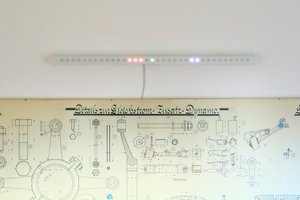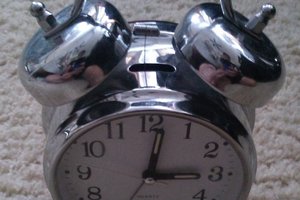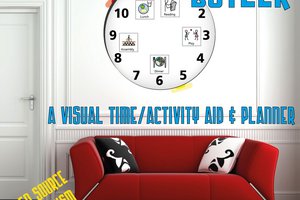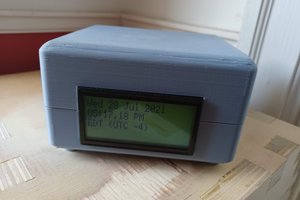Backstory
Circa 1983, 14 year-old me was enamored of a clock seen at The Sharper Image store in the mall. It consisted of concentric rings of 60 LEDs of the classic 5mm domed package type. It featured a cool "60ths" LED animation that would circle the clock once each second. It had a price tag of an astonishing $250 - almost $800 in today's money!
About 5 years later, just a year or two out of high school , a friend and I decided that we knew enough to build that clock ourselves and maybe we could make it for much less money. So we brainstormed some ideas for the circuit design. We breadboarded some of the concepts but alas... school, work, and all the other early-adult-life distractions conspired to put the project in the drawer, and that was that ... for 33 years when, in 2021, I got the wild idea to complete the project using all the cool software and manufacturing services that have cropped up in the hobby space since.
Could this have been done with a microcontroller and some shift registers or maybe some charlieplexing? And are there a dozen ways to make the design more clever and use fewer parts? Yep! But those ideas wouldn't be "the" clock as we teenagers envisioned. So this design is as true as possible to our original ideas...
Counters
To track the time, binary counters were used, needing 6 bits to cover the 60-count of LEDs in each ring. 74393 dual 4-bit counters fit the bill nicely. Some discrete logic would decode the value of sixty to generate a pulse that would both reset that counter to zero and increment the next counter. We'd need 4 counters - jiffies, seconds, minutes, and hours.
An interesting point that came up was accounting for 60 LEDs in the hours ring to emulate a proper analog hour hand. For that, a spare counter acted as a divide-by-12 from the reset pulse going into the minutes counter - advancing the hour ring by one LED every 12 minutes.
Clock Source
The original idea was to use a 9V AC adapter and derive a 60Hz pulse from the mains. This has two problems. The first is that given the multiplexed nature of the LED driver arrangement (we'll get to that next), we would need a 240Hz clock. The second is that in 2024, the idea of powering something by anything but USB-C and fiddling with barrel connectors and wall warts seemed dumb, especially a natively 5V circuit.
So starting at 240Hz and working my way up the binary food chain, I discovered 3.93216 Mhz crystals and the 744060 binary divider that can drive a crystal directly -- clearly, I'm not the first to walk this path! Conveniently, a SPDT tactile switch could switch between 240Hz clock and one of the available less-divided lines for the fast-forward time-set function.
This 240Hz clock was fed into the remaining half of one of the 74393 counters to provide both the signals for the multiplexers (hang on, that part's next) and the 60Hz input to the jiffy counter.
Driving the LEDs
To drive the LEDs, we decided back in 1988 that the 74154 4-to-16 line decoder/multiplexer would be a good candidate, given the ample current-sinking ability on its outputs. But when we determined that we'd need 16 of them and saw the price at the time, we took a step back.
Some brain-stretching later, we considered that we could get away with only 4 of them if we multiplexed them by switching both the counter lines and the high-side power to each ring in sync, effectively rows and columns. Since we had more brains than money, we decided this was the way to go.
So the lower four bits of the counter would go to all of the '154s and the two remaining upper bits would choose which '154 would be active - This was considered Quite Cool and Elegant to us!
This is why we needed a 240Hz clock, in order to cycle through all four rings 60 times/sec, which was a requirement to support the little jiffy "chaser".
Yes, it's got a 555!
One little...
Read more » Will Kalman
Will Kalman



 Jan
Jan
 Andrew Cooney
Andrew Cooney
 jens.andree
jens.andree
 zaphod
zaphod
Congrats for making the front page! I made a clock like that a bit ago. I went with a microcontroller because I wanted it to read a GPS to get accuracy to justify the 1/60 second precision the clock shows. https://hackaday.io/project/20292-project-precision